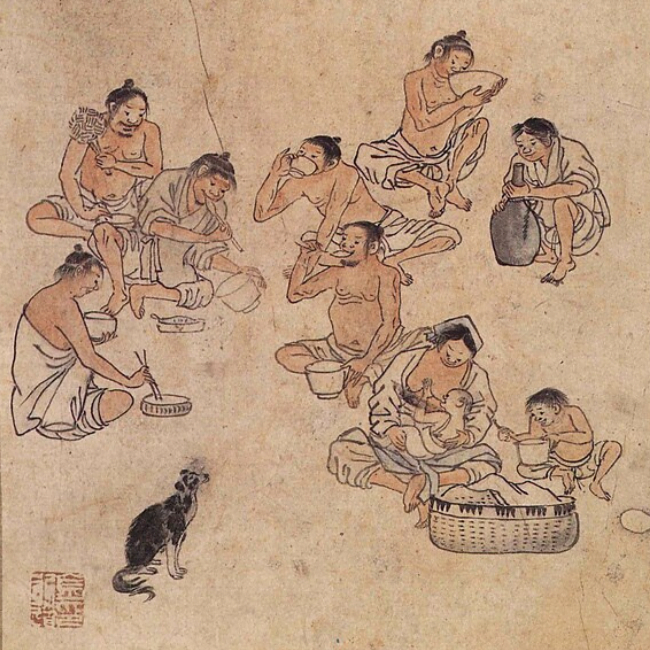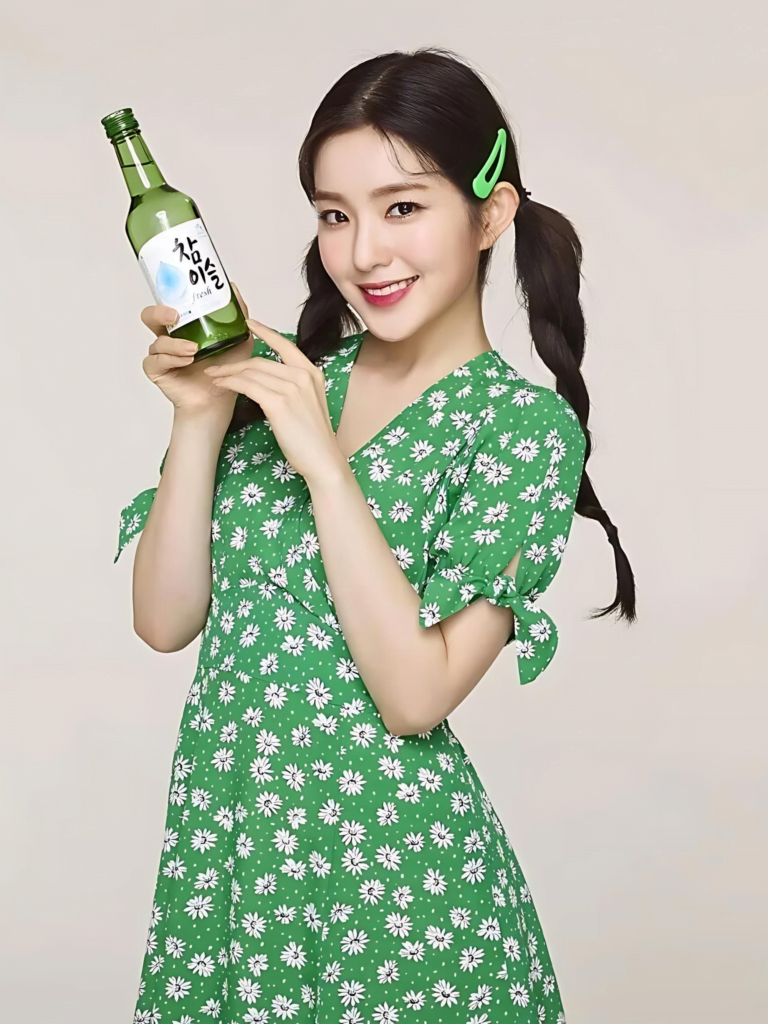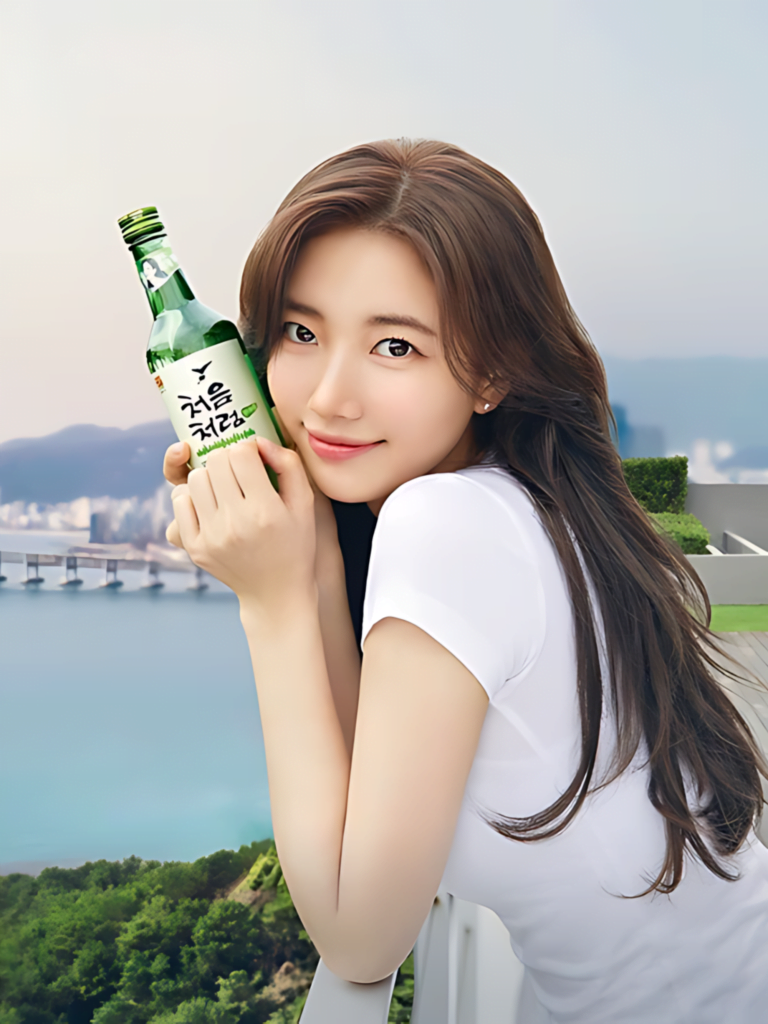Soju-licious: Korea’s Beloved National Drink
Tracing Soju’s Origins: From Royal Spirit to Korea’s National Drink
Soju, Korea’s beloved national drink and a testament to innovation and communal culture, boasts a history stretching back over 700 years. This spirit, like Hangul and Hansik, is deeply ingrained in the cultural fabric of Korea, shaping the nation’s social and ceremonial traditions.
The tale of soju commences during the Goryeo Dynasty (918-1392), a period when the art of distillation was introduced to Korea by the Mongols. These conquerors had acquired advanced distillation methods from the Persians during their expansive campaigns across Central Asia. Upon reaching the Korean Peninsula, these techniques were seamlessly integrated into the fabric of Korean society, adapted to harmonize with local traditions and ingredients, much like the communal and adaptive traits seen in traditional Hanok and the diverse flavors of Hansik. To learn more about the broader context of Korean cultural traditions, explore our in-depth Korean Culture Guide: Decoding Korea’s Rich Heritage.
Soju’s journey is a fascinating one, transitioning from being a royal beverage to a drink for everyday enjoyment. This transformation, much like the evolution of traditional Hanbok and Hanok, reflects the changing dynamics of Korean society and the democratization of soju consumption.
Soju as a Royal Delicacy: The Birth of Korea’s National Drink
Historically, soju, now Korea’s beloved national drink, was a beverage of the elite, symbolizing societal hierarchy and reflecting Korean cultural elegance. Its refinement and purity made it suitable for the most auspicious occasions. One of the most significant events in Korean history in which soju played a prominent role was the signing of the treaty by King Gojong in the late 19th century.

One of the most significant events in Korean history in which soju played a prominent role was the signing of the treaty by King Gojong in the late 19th century.
In 1882, King Gojong, the 26th king of the Joseon Dynasty, which succeeded Goryeo, signed the Treaty of Chemulpo (Incheon) with the United States. This event marked the opening of Korea to international trade and diplomacy. During the official ceremonies, soju was served as a gesture of goodwill and to honor the dignitaries present. This usage underscores soju’s role not just as a beverage but as a diplomatic tool, symbolizing peace and cooperation between nations.
The preference for soju in the royal court wasn’t just due to its alcoholic content but also its versatility in pairing with traditional Korean cuisine, enhancing the flavors of the food and the overall dining experience. The clear, potent spirit was often consumed in small porcelain cups, and its service followed strict protocols that reflected the hierarchical and respectful culture of the Korean aristocracy.
Soju’s Journey: From Royal Courts to Korea’s Beloved National Drink
As Korea evolved, soju transitioned from a royal luxury to become the nation’s most beloved drink, finding its way into the everyday lives of common people. The democratization of soju started during the late Joseon Dynasty, as brewing techniques spread and became more accessible. This transition was fueled partly by economic necessity and partly by the natural human desire to partake in the pleasures of soju.
The broader availability of soju resulted from changes in societal structures and the relaxation of strict laws that previously regulated its production and consumption. Local distilleries flourished, and soju quickly became popular at festivals, markets, and social gatherings. It was prized for its ability to warm the body and spirit during harsh winters and was often used in communal settings to reinforce social bonds and communal harmony.
Over time, soju became integrated into various Korean customs and celebrations, including weddings, birthdays, and ancestral rites. Its role in these events helped solidify its status as Korea’s national beverage, a symbol of both joy and solemnity.
The Evolution of Soju: Crafting Korea’s National Drink Through the Ages
Soju’s distillation began in began in Gaegyeong, the Goryeo Dynasty capital, serving the royal court with a spirit praised for its purity and potency. Over time, soju transitioned from an aristocratic delicacy to an everyday staple by the Joseon Dynasty, reflecting broader cultural shifts like the democratization seen with Hangul.
By the time of the Joseon Dynasty (1392-1910), soju had transcended its aristocratic origins to become a staple among the common people, mirroring the broader democratization of cultural elements such as Hangul. During this era, the government asserted control over soju production, both as a measure to regulate alcohol consumption and as a way to generate revenue. However, this state-run monopoly was eventually abolished in the late 19th century, sparking a proliferation of private distilleries and leading to a rich diversification of soju types, much like the diverse expressions of Korea’s cultural heritage seen in other areas.



The 20th century brought more changes to the production of soju. The scarcity of rice due to the Japanese colonial period (1910-1945 forced producers to adapt by turning to alternative grains such as wheat and barley. The transformation was further accelerated after the Korean War (1950-1953) when Korea’s industrial capacity expanded rapidly amidst post-war reconstruction efforts. During this time, sweet potatoes and tapioca began to be widely used as substitutes for traditional grains.
The shift to industrial production methods stabilized the soju supply during economic difficulty and played a crucial role in its evolution into a globally recognized beverage. By modernizing production and adapting the traditional spirit for domestic and international markets, manufacturers could ensure consistent quality and flavor profiles. These innovations laid the groundwork for soju’s current status as a versatile and widely enjoyed spirit, integral to everyday life and special occasions in Korea.
Understanding Soju: Distinguishing Korea’s Signature Spirit

Soju and Sake: A Comparative Analysis
Soju and sake, while often mentioned in the same breath due to their Asian origins, are distinct spirits that differ significantly in their production, ingredients, flavors, and cultural roles. Understanding these differences can deepen appreciation for soju and its unique place in Korean culture.
| Characteristic | Soju | Sake |
|---|---|---|
| Alcohol Strength | 16-25% ABV | 15-20% ABV |
| Production Process | Grains are fermented then distilled | Rice is fermented then brewed |
| Ingredients | Rice, sweet potatoes, barley, or tapioca | Made exclusively from special rice (shuzō kōtekimai) |
| Flavor Profile | Clean, crisp, slightly sweet flavor | Broader range of flavors: sweet, earthy, floral, or fruity |
| Drinking Style | Typically enjoyed in shot glasses with meals | Often sipped from small porcelain cups |
| Temperature | Usually served chilled | Can be served warm or cold |
Soju Today: Korea’s National Drink on the Global Stage
The popularity of soju, Korea’s national drink, extends far beyond its borders, significantly impacting the global market and becoming a beloved beverage worldwide. Below here are just a few of the popular Soju brands.

Jinro Soju, known by the brand name Chamisul, has a rich history dating back to 1924. Its best-selling soju is HiteJinro Chamisul Fresh. According to International Wine and Spirits Research (IWSR), which ranks the world’s largest spirits brands by volume annually, for the past 20 years, Jinro Soju has been the world’s best-selling spirit brand, outselling competitors such as Stolichnaya, Bacardi, and Johnnie Walker.

Soonhari is the original flavored Soju produced by Lotte in South Korea. Translated as “smooth,” Soonhari has cornered Korea’s young, female-identifying consumers with its unique selling points of a lower calorie profile and lower proof alcohol content of 12% ABV. Soonhari is distilled from rice, sweet potatoes, and tapioca and comes in 7 delicious flavors: Peach, Strawberry, Apple Mango, Yogurt, Apple, Grape, & Citron.

Good Day is the flagship soju for the distillery Muhak. While the soju is relatively new, having entered the market in 2006, it is currently the third-largest Soju manufacturer worldwide after Chamisul (Jinro) and Chum Churum (Lotte). Good Day is renowned for releasing flavors using the input of the different countries that import it, which has resulted in a wide variety of flavors, including Calamansi and Mint Chocolate Soju.

Lotte Liquor’s Chum Churum was introduced to the market in 2006 and has been ranked No. 1 in the soju category on the National Consumer Satisfaction Index (NCIS) for four straight years. Chum Churum is made from a mix of rice and grains and is slightly sweeter, making it one of the easier-to-drink soju.
Soju Girls: The Role of Celebrity Endorsements in Soju’s Popularity
The influence of soju, Korea’s national drink, extends far beyond the dining table, permeating various aspects of pop culture. Its presence is felt in movies, music, and television dramas, reflecting its deep-rooted significance in Korean society. One of the most notable aspects of Soju’s cultural impact is the phenomenon of the “Soju Girls.”
The tradition of Soju Girls began in the 1960s with famous South Korean actresses, including Um Aing-ran and Nam Jeong-im. Um Aing-ran’s wholesome image and Nam Jeong-im’s lively and confident image helped to promote soju as a drink for everyone, breaking down barriers and making it more accessible to the general public.
Over the years, many famous Korean actresses and K-pop idols have followed in their footsteps, becoming the faces of Soju brands and continuing the legacy of the Soju Girls. These Soju Girls have played a significant role in promoting Soju brands and shaping the image of Soju in popular culture. Their endorsements not only boost the brands’ visibility but also contribute to the global popularity of Soju.
In Korea, Soju companies only use the most beautiful stars as their models. This is why people say that if you want to know who the hottest stars are at the moment, look at the Soju advertisements. The Soju Girls are selected to represent the nation’s favorite beverage and are often the most beautiful and popular idols and actresses.
The success of using Soju Girls in advertisements is evident. For instance, during the five years that Lee Hyori was active as Chumchurum’s model, Chumchurum’s stocks rose by 15%. It is estimated that more than 2 billion bottles were sold during this period.
This effective use of celebrity endorsements has transformed soju from a traditional Korean drink into a modern lifestyle product that appeals to a global audience. The clever integration of soju into Korean pop culture has made it synonymous with fun and celebration, helping it become a part of young people’s social lives in Korea and abroad.
Soju on the Global Stage: Trends Shaping the Future of Korea’s National Drink
Soju’s evolution from an aristocratic delicacy to a drink enjoyed by people from all walks of life mirrors Korea’s own path toward modernity and democratization. Each bottle of soju carries with it the flavors of Korea’s past and present, serving as a liquid chronicle of the nation’s history. It has adapted to changing tastes and times, introducing new ingredients and adopting modern manufacturing processes while maintaining its essential character.
Soju’s popularity is not confined to Korea’s borders. It has significantly impacted the global market, becoming a beloved beverage in many countries worldwide. The global Soju market was valued at USD 779.53 million in 2020 and is expected to reach USD 1,167.30 million by 2026. This growth is driven by the increasing popularity of Korean culture, including K-pop, K-dramas, and Korean cuisine, which has introduced Soju to a broader audience.
The Soju industry is experiencing exciting and innovative trends. One notable trend is the growing popularity of flavored Soju. Various brands are experimenting with multiple flavors, such as apple and peach, and even more unique options, like yogurt. This innovation caters to the evolving preferences of consumers, especially the younger generation, and adds a new dimension to the Soju drinking experience.
There is a new trend emphasizing the growing popularity of premium Soju. As consumers become more discerning, there is an increasing demand for high-quality Soju made from top-notch ingredients. As a result, artisanal Soju brands that prioritize traditional brewing methods and exceptional quality have emerged.
Soju’s importance in Korean society is just one aspect of the country’s rich cultural tapestry. To delve deeper, explore our comprehensive guide to Korean culture and uncover more interesting facts about Korean traditions.
So, whether you’re a Soju connoisseur or a curious novice, we encourage you to explore the diverse world of Soju and appreciate its cultural significance. When you raise a glass of Soju, remember that you’re not simply drinking a beverage but participating in a timeless cultural tradition.




























One Comment
Comments are closed.